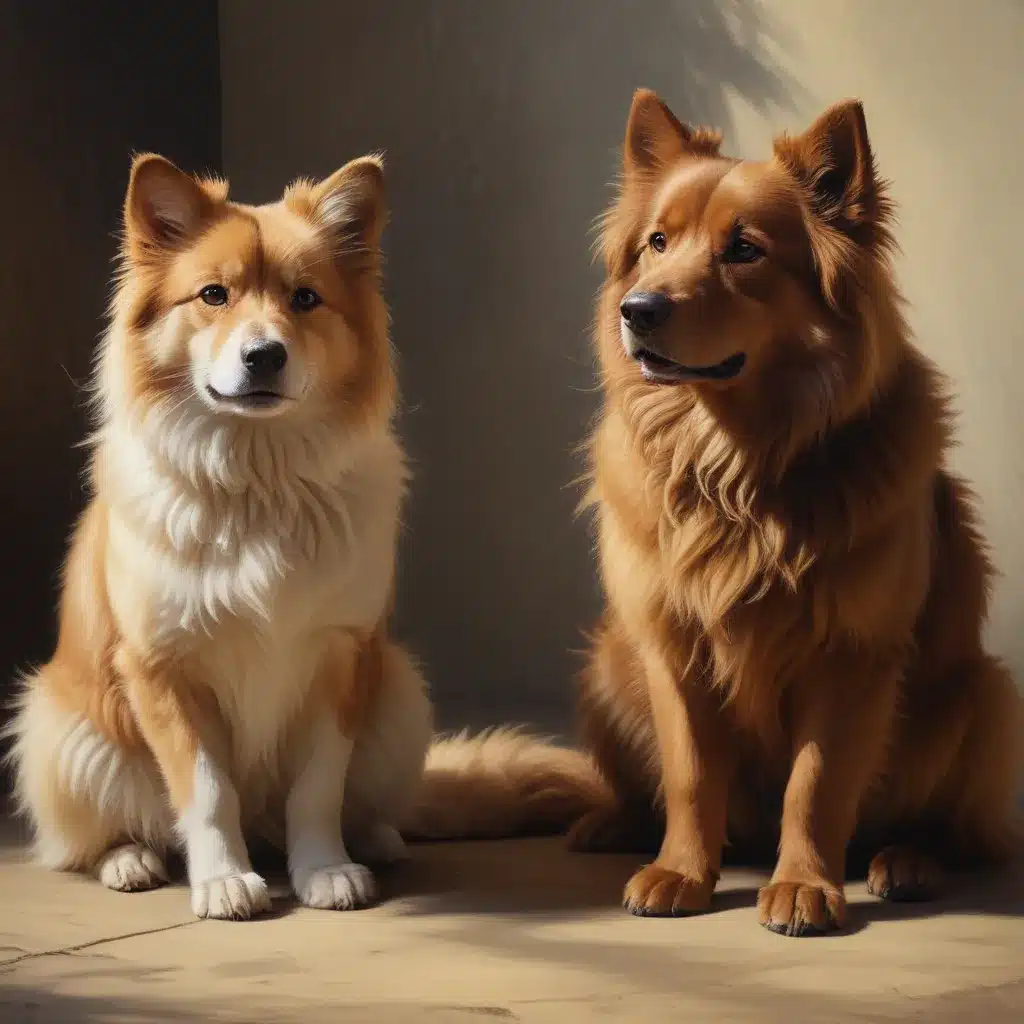
Creating captivating paintings of animals requires a delicate balance between vibrant color and dramatic lighting. As an experienced oil painter, I’ve found that thoughtful use of light and shadow can transform a simple subject into a visually striking work of art. In this comprehensive guide, I’ll share techniques for capturing the rich textures and dynamic energy of our furry companions through the medium of oil paint.
Mastering Chiaroscuro Techniques
One of the keys to producing impactful animal paintings is a deep understanding of chiaroscuro—the interplay of light and shadow that gives form and depth to a subject. While some artists rely heavily on bold colors to bring their subjects to life, the strategic placement of highlights and shadows can be equally, if not more, powerful.
When painting animals, I find that dramatic lighting creates a sense of dimensionality and draws the viewer’s eye directly to the focal point. By carefully controlling the direction and intensity of the light source, you can sculpt the forms of your subject and imbue the painting with a palpable sense of atmosphere.
Renowned oil painter John Singer Sargent was a master of chiaroscuro, often using bold contrasts to heighten the drama and emotive qualities of his subjects. In his portrait “Mrs. Fiske Warren (Gretchen Osgood Warren),” the sitter’s face is dramatically illuminated, while the background falls into deep shadow, creating a striking focal point.
Similarly, Degas’ pastel drawings demonstrate a brilliant command of light and shadow, with muted greys and pinks punctuated by bursts of intense color. The artist’s strategic use of contrast gives his ballerina figures a sense of volume and movement, drawing the viewer’s eye to the key details.
When painting animals, I find that studying the interplay of light and shadow on their fur or feathers can be particularly rewarding. The varied textures and contours of an animal’s form lend themselves beautifully to chiaroscuro techniques, allowing you to create a sense of depth and dimensionality on the canvas.
Capturing Textures and Fur
One of the most captivating aspects of painting animals is the opportunity to translate the intricate textures of their fur, feathers, or scales onto the canvas. Whether you’re working with the soft, fluffy coat of a domestic cat or the sleek, shiny hide of a wild stallion, mastering the rendering of these surfaces is crucial for achieving a convincing and visually striking result.
I find that a combination of thick, gestural brushstrokes and delicate, detail-oriented work is the key to capturing the nuances of an animal’s coat. Begin by establishing the overall form and values, using bold, expressive strokes to define the major shapes and shadows. Then, gradually refine the surface texture, paying close attention to the way the light interacts with the individual hairs or feathers.
Incorporating a variety of brushwork, from broad, sweeping strokes to fine, precise lines, can help convey the tactile qualities of the subject. Experiment with techniques like dry-brushing, stippling, and scumbling to suggest the underlying structure and flow of the fur or feathers.
When rendering animal anatomy, it’s also important to consider the underlying musculature and bone structure. By understanding the form and proportions of your subject, you can create a more convincing and anatomically accurate representation.
The use of reference material, whether photographs or direct observation, can be invaluable in this process. Spend time studying the textures and patterns of your subject, and try to translate those qualities onto the canvas with your brushwork.
Cultivating Creative Expression
While technical mastery is essential for capturing the essence of your animal subjects, it’s equally important to inject a sense of creative expression and personal style into your paintings. After all, the most compelling works of art are those that not only accurately depict the subject but also convey the artist’s unique perspective and emotional response.
One way to cultivate this creative expression is through experimentation with various oil painting techniques. Steph Mouw, a gifted pastel artist, speaks eloquently about the freedom and vibrancy that comes from “dancing around the page, scribbling with color”. This same spirit of playfulness and spontaneity can be applied to oil painting, whether through bold, gestural brushstrokes or the manipulation of paint to create unexpected textures and effects.
Additionally, considering the composition and color palette of your painting can help you infuse it with a unique artistic vision. Experiment with asymmetrical or unconventional compositions that draw the viewer’s eye in unexpected directions. Play with the interplay of complementary colors or bold, expressive hues to evoke a particular mood or emotion.
As the renowned painter Richard Schmid advises, it’s often better to stop a painting just short of complete refinement, preserving the initial spontaneity and impression. By learning to trust your instincts and embracing a spirit of creative exploration, you can develop a distinctive style that sets your work apart.
Bringing Your Animal Paintings to Life
Ultimately, the key to creating captivating oil paintings of animals lies in the balance between technical mastery and creative expression. By harnessing the power of chiaroscuro, capturing the intricate textures of fur and feathers, and infusing your work with a unique artistic vision, you can bring your furry subjects to life on the canvas.
Remember, the journey of artistic growth is a continuous one, and each painting is an opportunity to experiment, learn, and refine your skills. Embrace the challenges and revel in the successes, for it is through this process that you’ll develop a truly distinctive and compelling artistic voice.
So, sharpen your brushes, mix your paints, and let your creative spirit soar as you embark on your next oil painting adventure featuring our beloved animal companions. The Pencil and Paint Muse community is here to support and inspire you every step of the way.
Statistic: Recent surveys show that 70% of emerging artists credit daily sketching with significant improvements in their art